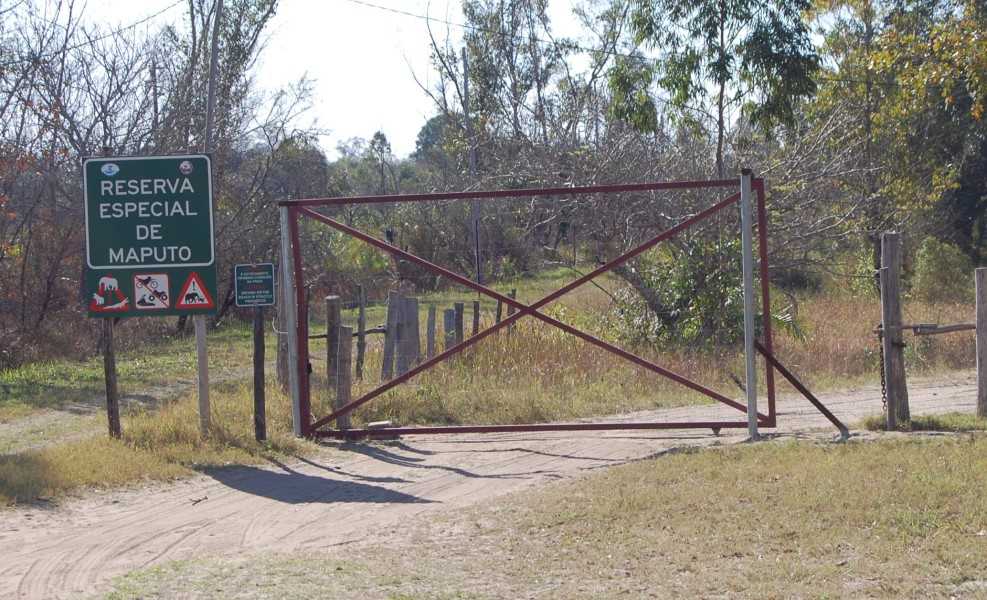The Maputo Elephant Reserve was established in 1932. However, the reserve also goes by its Portuguese name “Reserva de Maputo”. This nature reserve is enormous, it has over 190,000 sq acres. Additionally, the elusive elephant herd is the main attraction, but there are a variety of other safari animals to be found in the reserve.
In addition to 350 elephants, there are hippopotamus, crocodiles, and a wide variety of antelope. However, the safari animals inside the park are not accustomed to vehicles and they get spooked very easily.

Additionally, the vast expanse and inaccessibility of some areas made my first Maputo Elephant Reserve day trip rather challenging. Nonetheless, the Maputo Elephant Reserve tour is an excellent self drive safari opportunity and I returned to the reserve several times during my stay in Mozambique.
Maputo Elephant Reserve Entrance Gates
My Ponta do Ouro accommodation was a 1-2 hour drive from Maputo Elephant Reserve. The commute would be shorter or longer depending on which entrance gate I used.
The more heavily used entrance is the west gate and the proverbial “road less traveled by” would be the southern entrance. The western gate is closer to Maputo and it is also the more developed end of the reserve.
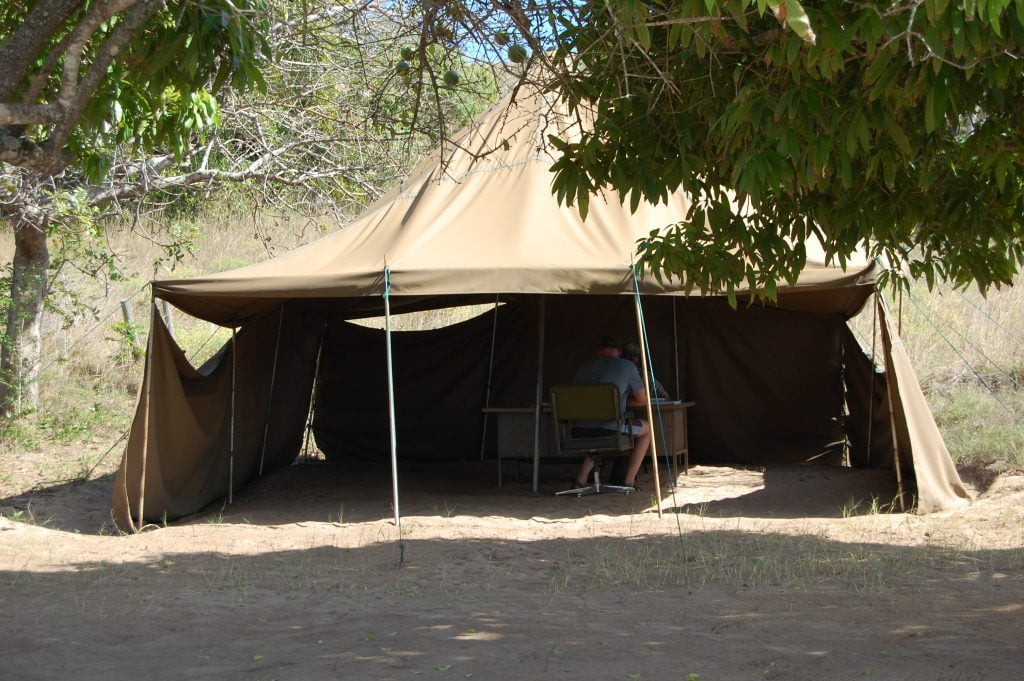
At the more primitive southern entry, make sure you have the right change for the Maputo Elephant Reserve entry fee. Also, this gate is rarely used so the guard may not always be immediately at hand.
Initially, the drive from Ponta do Ouro starts out on the main road 201 road to Maputo. The west gate entry point is marked with a sign, however, the southern entry gate is more obscure.
A few cows notwithstanding, traffic is non existent on the 201 road. I also encountered a shady “security” checkpoint on one occasion. However, I managed to safely pass through.
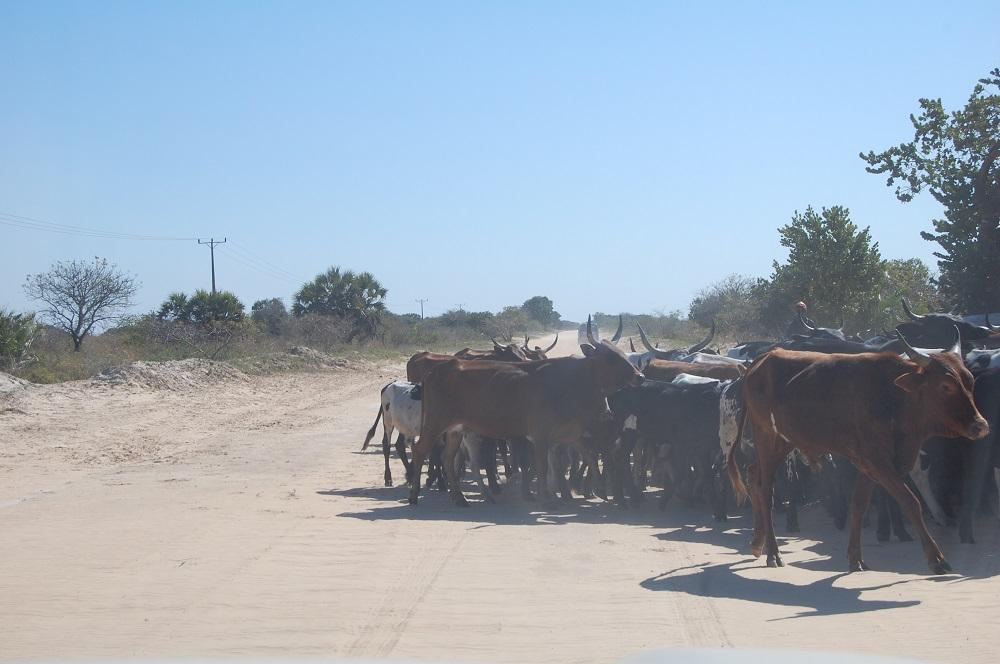
Where are the Elephants?
I used the southern entrance for my first Maputo Elephant Reserve day trip from Ponta do Ouro. The guard at the entrance spoke a bit of English and I inquired about the location of the elephants.
In response, he indicated that the elephant herd can be anywhere at anytime. Unsurprisingly, I received the same response when I used the west gate entry point on a different day.
Navigation Inside Maputo Elephant Reserve
For day one, my plan was to drive north in between Lagoa Piti and Lagoa Chingute until I reached an intersection with the road that traversed the park form west to northeast.
If you travel east on the road, it leads to the Maputo Elephant Reserve camping areas on the coastal strip. Conversely, if you go west you will reach the west gate entry/exit point.

Traveling in the park is a desolate experience. The area is vast and it is very easy for the animals to remain concealed from the road.
As I passed the access roads to Lagoa Piti I decided not to approach the lake because of their extremely dubious condition. Additionally, I was concerned about how long it would take me to exit the park at the other end.
There are no road signs in the reserve, therefore on my first excursion the only way to be certain about this was to complete the journey.
I relied on my own judgement to navigate inside the park. As long as I kept traveling north, the east-west road would cross my path at some point. However, in order not to get lost it is imperative that I keep traveling due north.
I used Lagoa Piti as a reference point. When I passed Lagoa Piti, it was on my right side (east) thus I knew I was traveling in the correct direction (north).
East-West Road Maputo Elephant Reserve
My intuition proved correct and I reached the east-west road after 2-3 hours. Since the day was still young, I decided to head east for awhile. After driving for about 45 minutes I turned around and started heading west, presumably towards the west gate entrance. Unfortunately, I was still not 100% certain of my current location.
Fortunately, on the distant horizon I saw my first vehicle of the day. It was a 4×4 driving towards the coastal camping areas. I flagged them and indeed they had come from the western entrance gate.
As a result, I was slightly relieved because my navigation strategy so far had proved accurate. Additionally, I knew my current location and approximately how long it would take to reach the west gate exit.
Hippopotamus Herd at Lagoa Chingute
I had some time to spare so I veered off to the south slightly and discovered Lagoa Chingute. This was a very fortunate decision that would soon prove to be a very prudent route adjustment.
Unfortunately, I had only spotted one antelope thus far during my Maputo Elephant Reserve tour. But now things were about to get interesting!

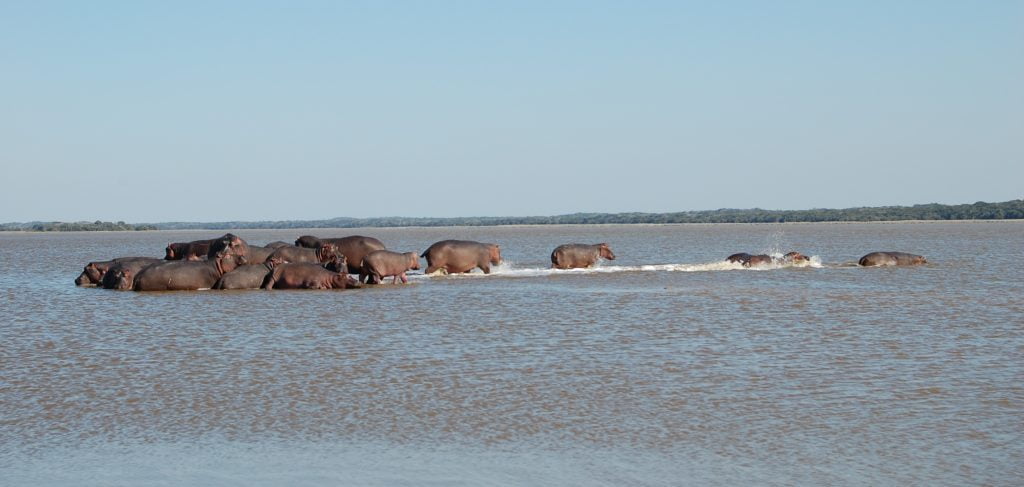
I had discovered a group of hippopotamus that were congregated at the north end of Lake Chingute. I was very pleased that my search for wildlife had finally bore fruit.
The hippopotamus would spook easy so I had to approach incrementally. Therefore, I would drive very slowly about 50-100 meters than stop the vehicle, turn off the engine, wait 5 minutes – repeat.
Using this tedious method, I was able to eventually get quite close without them charging off into the water. I hung around for about an hour and observed the hippopotamus.
Crocodiles at Lagoa Chingute
After observing the hippos I slowly began to drive around the perimeter of the lake and came upon several big crocodiles. They were taking in the afternoon sun and didn’t appear too concerned about my presence.
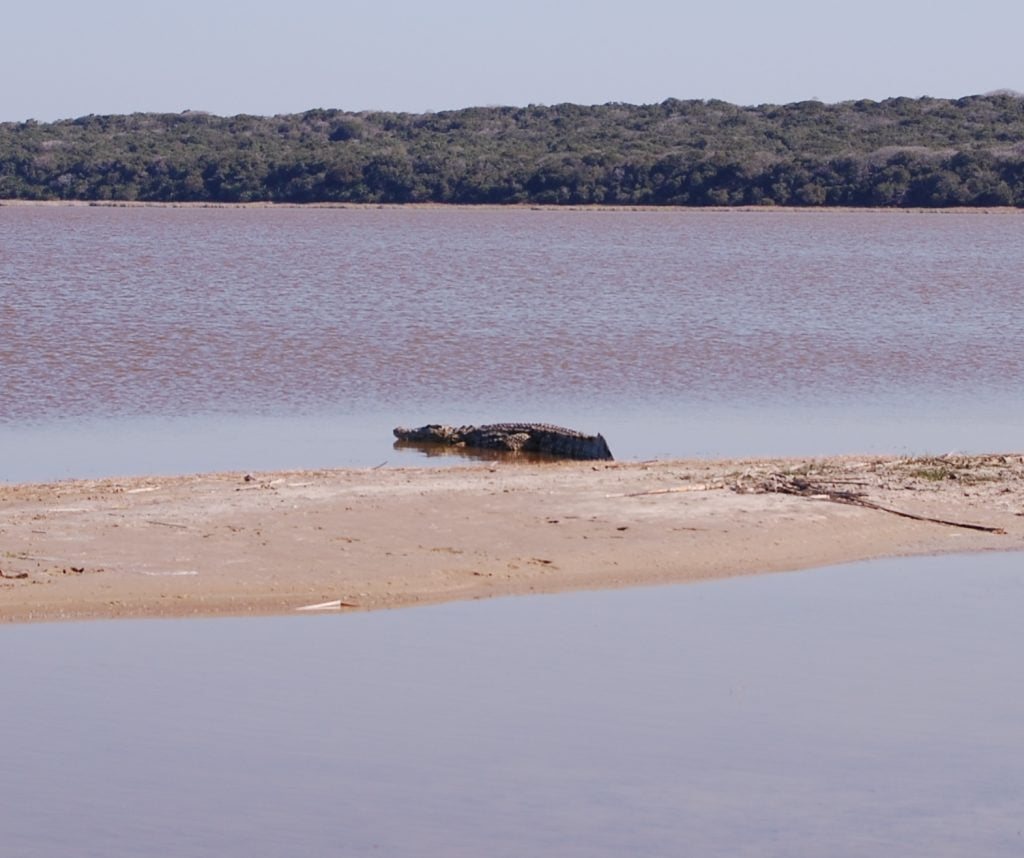

Elephants at Maputo Elephant Reserve?
I really wanted to visit the elephants at the Maputo Elephant Reserve. Unfortunately for me, the elephants would remain invisible. I returned for several Maputo Elephant Reserve day trips and was unable to find them.
Although it was a very nice consolation that the hippopotamus and crocodiles were readily available every time that I returned to Lagoa Chingute.
Nonetheless, the elephants at Maputo Elephant Reserve are very real to the local residents in the area. One of my local friends in Ponta do Ouro had some very frightening personal experiences involving the elephants.
Indeed, there were several occasions when the elephants had attacked vehicles on the road to Maputo from Ponta do Ouro. These attacks would mostly occur at night and unfortunately they can be fatal to the vehicle passengers.
Conclusion
Maputo Elephant Reserve is a more challenging area to observe elephants than some of the other game parks I visited in Africa. Additionally, it is not so accommodating for vehicles as some of the other self tour opportunities.
Furthermore, the elephants here are very mobile and rarely stay in one place for very long. However, it was well worth the challenge and the wildlife that I eventually found were adequately rewarding. A Maputo Elephant Reserve tour is definitely worth pursuing.

